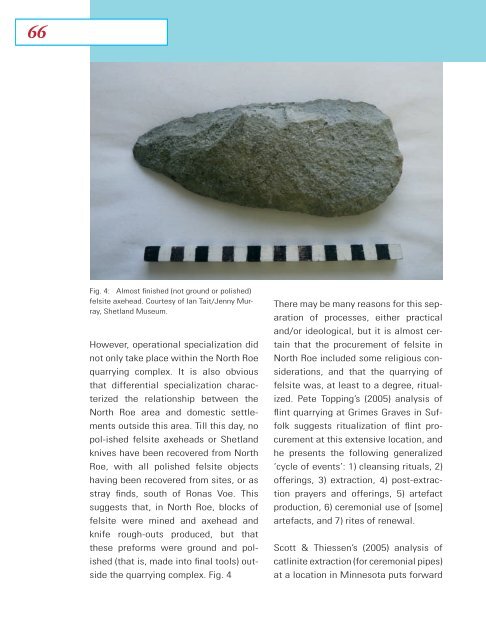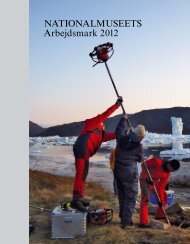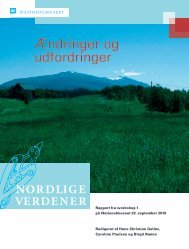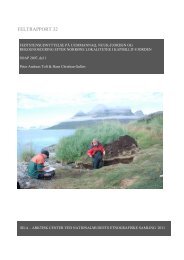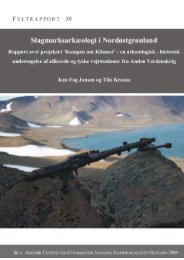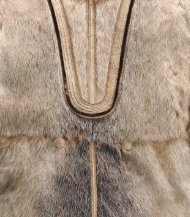The Border of Farming and the Cultural Markers - Nordlige Verdener
The Border of Farming and the Cultural Markers - Nordlige Verdener
The Border of Farming and the Cultural Markers - Nordlige Verdener
You also want an ePaper? Increase the reach of your titles
YUMPU automatically turns print PDFs into web optimized ePapers that Google loves.
66<br />
Fig. 4: Almost finished (not ground or polished)<br />
felsite axehead. Courtesy <strong>of</strong> Ian Tait/Jenny Murray,<br />
Shetl<strong>and</strong> Museum.<br />
However, operational specialization did<br />
not only take place within <strong>the</strong> North Roe<br />
quarrying complex. It is also obvious<br />
that differential specialization characterized<br />
<strong>the</strong> relationship between <strong>the</strong><br />
North Roe area <strong>and</strong> domestic settlements<br />
outside this area. Till this day, no<br />
pol-ished felsite axeheads or Shetl<strong>and</strong><br />
knives have been recovered from North<br />
Roe, with all polished felsite objects<br />
having been recovered from sites, or as<br />
stray finds, south <strong>of</strong> Ronas Voe. This<br />
suggests that, in North Roe, blocks <strong>of</strong><br />
felsite were mined <strong>and</strong> axehead <strong>and</strong><br />
knife rough-outs produced, but that<br />
<strong>the</strong>se preforms were ground <strong>and</strong> polished<br />
(that is, made into final tools) outside<br />
<strong>the</strong> quarrying complex. Fig. 4<br />
<strong>The</strong>re may be many reasons for this separation<br />
<strong>of</strong> processes, ei<strong>the</strong>r practical<br />
<strong>and</strong>/or ideological, but it is almost certain<br />
that <strong>the</strong> procurement <strong>of</strong> felsite in<br />
North Roe included some religious considerations,<br />
<strong>and</strong> that <strong>the</strong> quarrying <strong>of</strong><br />
felsite was, at least to a degree, ritualized.<br />
Pete Topping’s (2005) analysis <strong>of</strong><br />
flint quarrying at Grimes Graves in Suffolk<br />
suggests ritualization <strong>of</strong> flint procurement<br />
at this extensive location, <strong>and</strong><br />
he presents <strong>the</strong> following generalized<br />
‘cycle <strong>of</strong> events’: 1) cleansing rituals, 2)<br />
<strong>of</strong>ferings, 3) extraction, 4) post-extraction<br />
prayers <strong>and</strong> <strong>of</strong>ferings, 5) artefact<br />
production, 6) ceremonial use <strong>of</strong> [some]<br />
artefacts, <strong>and</strong> 7) rites <strong>of</strong> renewal.<br />
Scott & Thiessen’s (2005) analysis <strong>of</strong><br />
catlinite extraction (for ceremonial pipes)<br />
at a location in Minnesota puts forward


